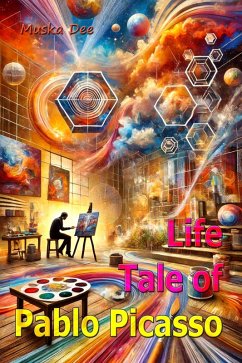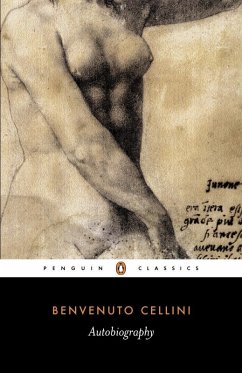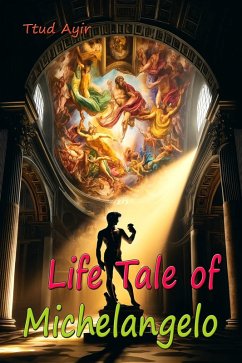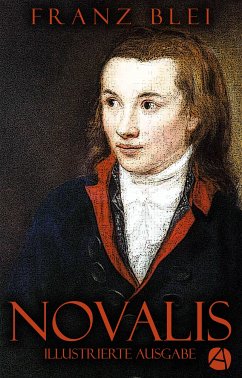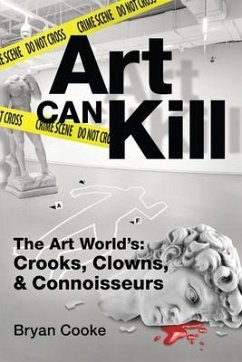
Francisco de Goya: His Life and Work (eBook, ePUB)

PAYBACK Punkte
0 °P sammeln!
Francisco de Goya's legacy as an artist, social critic, and political commentator remains one of the most profound in the history of Western art. Throughout his career, Goya's work evolved from the idealized court portraiture he was initially known for to deeply personal and politically charged pieces that explored the darkest aspects of the human condition. His later works, particularly the Black Paintings, The Disasters of War, and Los Caprichos, reflect a profound disillusionment with the political and social systems of his time, influenced by his personal experiences of illness, alienation...
Francisco de Goya's legacy as an artist, social critic, and political commentator remains one of the most profound in the history of Western art. Throughout his career, Goya's work evolved from the idealized court portraiture he was initially known for to deeply personal and politically charged pieces that explored the darkest aspects of the human condition. His later works, particularly the Black Paintings, The Disasters of War, and Los Caprichos, reflect a profound disillusionment with the political and social systems of his time, influenced by his personal experiences of illness, alienation, and the tumultuous political climate in Spain.
Goya's unflinching depictions of human suffering, madness, and violence set the stage for the development of modern art movements, such as Expressionism and Surrealism. His exploration of the psychological depths of the human psyche and his critique of power and war made him a precursor to these movements, where artists sought to confront the irrational and chaotic elements of human existence. Goya's works not only served as a direct protest against the abuses of the Spanish monarchy, the Catholic Church, and the atrocities of war but also provided a model for later generations of artists who used art as a vehicle for political and social critique.
Moreover, Goya's art influenced writers, philosophers, and intellectuals who grappled with existentialism, the absurd, and the human struggle against oppressive systems. His ability to depict both the internal and external forces that shape human behavior, as well as his use of grotesque and surreal imagery, aligned with the growing interest in the unconscious mind and the irrational in the 20th century. Through his art, Goya emerged as not just an artist of his time but a timeless figure whose legacy continues to inform contemporary discussions on war, politics, and human suffering.
As one of the first modern artists, Goya bridged the gap between classical traditions and the radical innovations of the modern era. His legacy endures as a powerful reminder of art's ability to challenge the status quo, engage with the darker truths of human nature, and provoke reflection on the moral and political dimensions of society. Goya's works remain relevant today, inspiring artists and thinkers to confront the persistent issues of injustice, power, and human fragility.
Goya's unflinching depictions of human suffering, madness, and violence set the stage for the development of modern art movements, such as Expressionism and Surrealism. His exploration of the psychological depths of the human psyche and his critique of power and war made him a precursor to these movements, where artists sought to confront the irrational and chaotic elements of human existence. Goya's works not only served as a direct protest against the abuses of the Spanish monarchy, the Catholic Church, and the atrocities of war but also provided a model for later generations of artists who used art as a vehicle for political and social critique.
Moreover, Goya's art influenced writers, philosophers, and intellectuals who grappled with existentialism, the absurd, and the human struggle against oppressive systems. His ability to depict both the internal and external forces that shape human behavior, as well as his use of grotesque and surreal imagery, aligned with the growing interest in the unconscious mind and the irrational in the 20th century. Through his art, Goya emerged as not just an artist of his time but a timeless figure whose legacy continues to inform contemporary discussions on war, politics, and human suffering.
As one of the first modern artists, Goya bridged the gap between classical traditions and the radical innovations of the modern era. His legacy endures as a powerful reminder of art's ability to challenge the status quo, engage with the darker truths of human nature, and provoke reflection on the moral and political dimensions of society. Goya's works remain relevant today, inspiring artists and thinkers to confront the persistent issues of injustice, power, and human fragility.
Dieser Download kann aus rechtlichen Gründen nur mit Rechnungsadresse in A, B, CY, CZ, D, DK, EW, E, FIN, F, GR, H, IRL, I, LT, L, LR, M, NL, PL, P, R, S, SLO, SK ausgeliefert werden.




